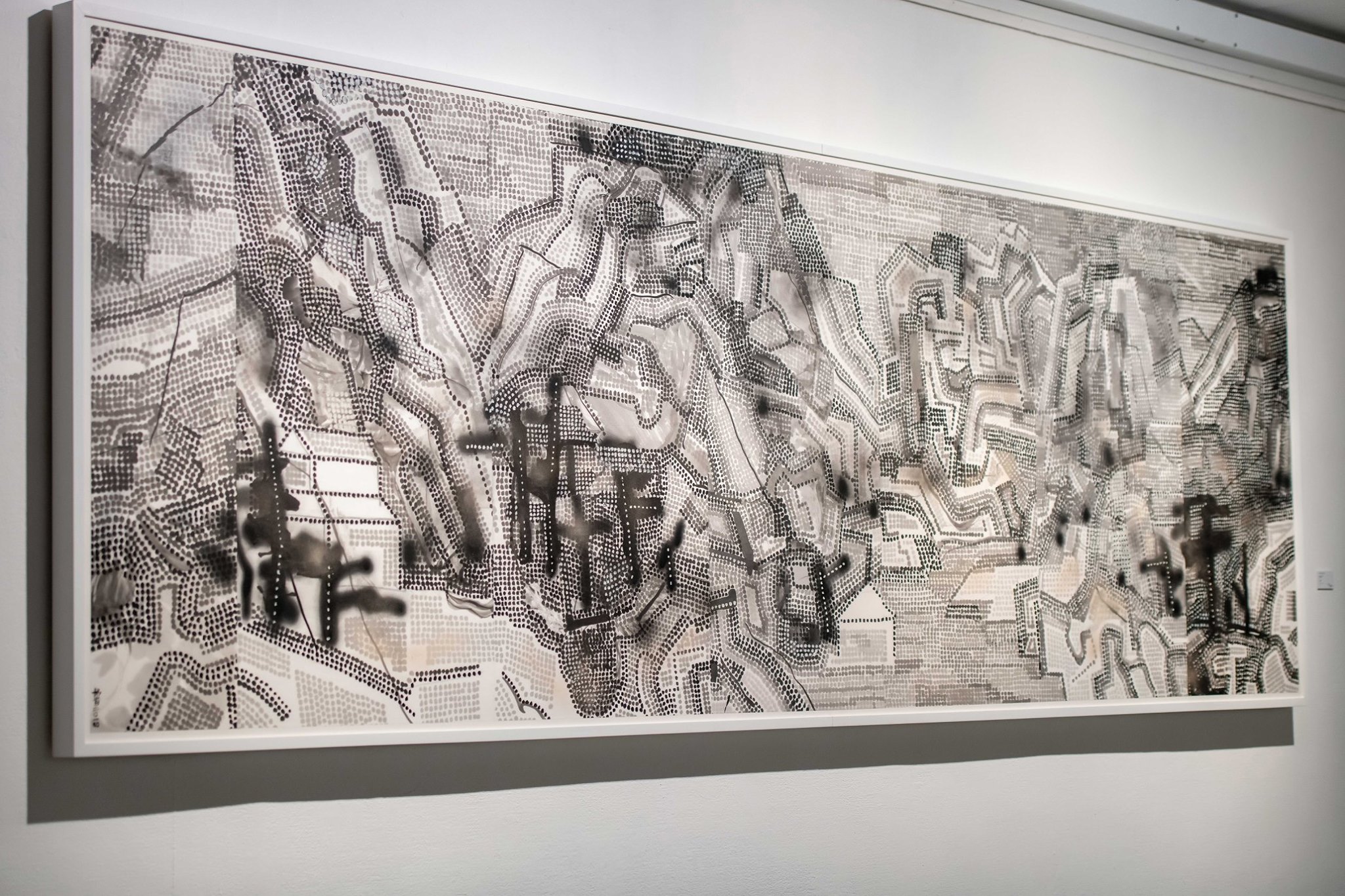Since the Industrial Revolution, human has affected and altered nature so much that at the turn of the millennia an entire new term has been created to characterize this era of no turning back, the Anthropocene. While there is no shortage of artists who criticize the problematic relationship between modernization and the environment or those who reminiscence the purity of nature, Shanghai based artist Wang Jieyin is one of a few who see the reality as it is, take it lightly and find beauty within the damaged, reasons within paradoxes. His tour de force solo exhibition at Hong Kong Arts Center, “Grand Landscape”, is a panoramic view of the artist’s broad horizon, in which the past comes to terms with modernity and together they celebrate life as a whole. Carefree yet emotionally charged, Wang’s oeuvre expresses his love for nature and more so his reverence for the omnipresent life force which can encompass all complexities of life.

Coexistence of Nature and Modernity
Stepping into the exhibition, viewers are immediately confronted by a few large scale landscapes executed with diversity of approaches, as if the past, present and future are collapsed into one dimension. Placed in the centre is the monumental ink work Xiaoshan Pinghu (immense mountains and tranquil lake). Measuring more than four meters long, the master piece is composed of countless ink dots in various tonalities forming into what appear to be enormous mountains, meandering river and small houses. At the same time, the picture looks like a digitally rendered image of a chaotic city with numerous dazzling lights. Wang’s skillful use of gradation and negative space creates such an optical effect that gives the picture a sense of depth and the overlapping shapes a shifting illusion as if the image is constantly changing itself like an electronic billboard. This coexistence of nature and modernity is conceptually juxtaposed by the ink circles and geometric shapes which call to mind the notion of “round sky and square earth” in Chinese tradition, a reminder of the eternity of nature and temporality of humanity.
The enormous ink work are flanked by two groups of landscapes in acrylics. On one side, the landscapes are mainly outlined by expressive and almost childish brushstrokes in black with traces of rubbing and spray paint, the vitality of the works is accentuated by the touch of azure. On the other side are vertical works of muted palette and minimal compositions with black mountains and hazy sky, suggesting a rather gloomy and desolate ambience. Despite the different emotions they elicit, these pieces exude both the ancient elegance of landscape and the heaviness of the destruction from industrialisation.

Old and New
The second section of the exhibition features a unique work that Wang created on site. Painted on a reflective material, the work is placed next to the window so that sunlight becomes a raw material that gives the painting a special visual effect. This inventive piece is then juxtaposed by the artist’s woodcarving works Eden created two decades ago. Beginning his career as a woodblock artist, Wang establishes his endless inspiration and tireless endeavor in modernizing Chinese art and reinventing tradition. In fact, many of his recent paintings displayed throughout the exhibition reveal traces of these woodcarving works and his techniques in printmaking; the raw and loose brushworks, the montage-like composition together with his constrained palette of earthly tone suggest not only the early phase of the artist’s career, but also a sense of nostalgia, a glimpse at the ancient Dun Huang murals, an admiration of the simplicity of the past.
The last section exhibits Wang’s ink abstraction works. Structural Landscape series is an illustration of the bustle and hustle, repetitive routines and hyper connectivity of modern life all reduced into an all-over geometric composition. The clever gradation creates a sculptural effect as if they are the aerial view of a busy city. On the other hand, in between those thick and emotionless lines, tinge of blue and green can be found occasionally, triggering memory of the once abundant natural landscape.
The exhibition is a window through which we can see the world in the eyes of the artist, whose unpretentious and carefree temperament explains his broad range of approaches and spontaneity in the creative process that is free from the constrains of both traditional Chinese and Western art forms. In his works, we find harmony between tradition and modernity, order in chaos, and hope in devastation. At once coherent and versatile, Wang tells his own story of the evolution of Chinese art.
(for COLLECT Art Journal, courtesy of 3812 gallery)
